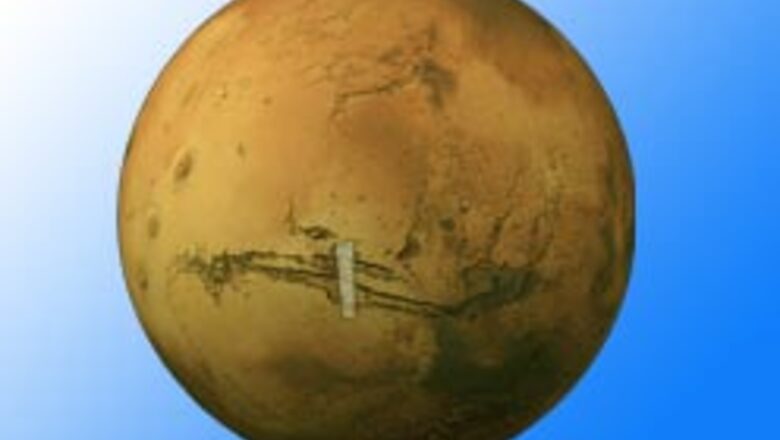
views
Chicago: Earth's dusty neighbor Mars is grappling with its own form of climate change as fluctuating solar radiation is kicking up dust and winds that may be melting the planet's southern polar ice cap, scientists said on Wednesday.
Researchers have been watching the changing face of Mars for years, studying slight differences in the brightness and darkness of its surface.
These changes in brightness have been generally attributed to the presence of dust, but until now their effect on wind circulation and climate has not been clear.
NASA scientist Lori Fenton and colleagues, reporting this week in the journal Nature, now believe variations in radiation from the surface of Mars are fueling strong winds that stir up giant dust storms, trapping heat and raising the planet's temperature.
By studying changes in light reflected from the surface of Mars, a measure known as an object's albedo- they predict the red planet has warmed by around one degree Fahrenheit (0.65 degree Celsius) from the 1970s to the 1990s, which may in part have caused the recent retreat of the southern polar ice cap.
On earth, carbon dioxide traps infrared radiation, which can affect global climate. This phenomenon is known as the greenhouse effect. Fossil fuel emissions add to the problem.
On Mars, it's the red-tinged dust.
Fenton's team compared thermal maps gathered from NASA's Viking mission in the 1970s with maps gathered more than two decades later by the Global Surveyor.
They saw that large swaths of the surface have darkened or brightened over the past three decades.
These albedo changes strengthened winds, picking up and circulating dust, creating a vicious cycle that is warming the planet.
"Our results suggests that documented albedo changes affect recent climate change and large-scale weather patterns on Mars," Fenton's team wrote.
They believe changes in albedo should be an important part of future studies on atmosphere and climate change.




















Comments
0 comment